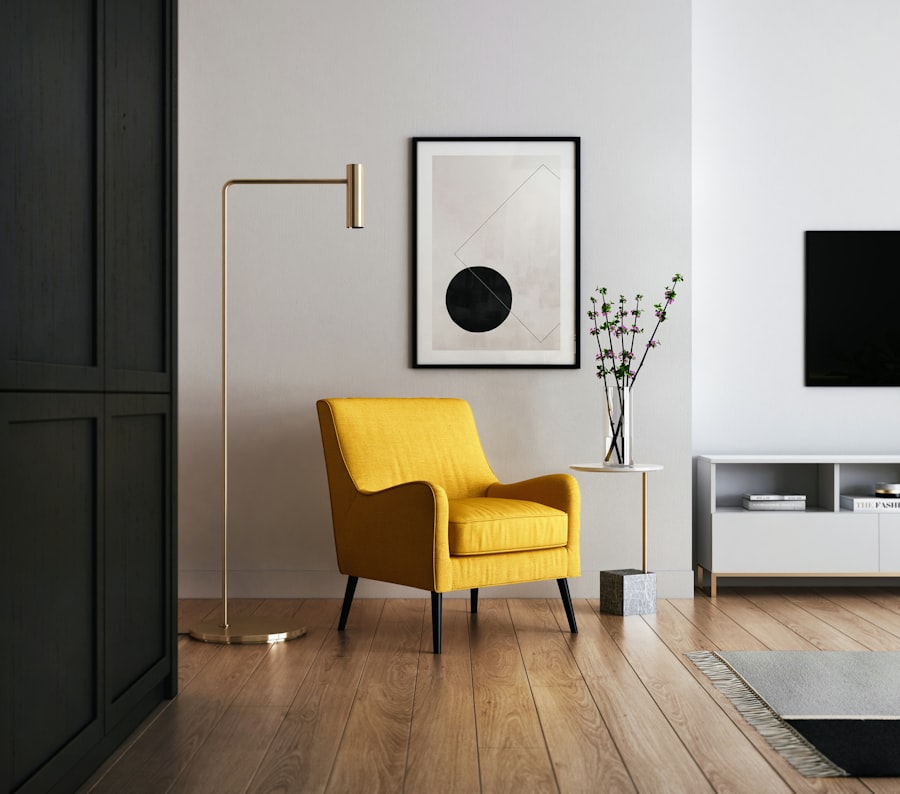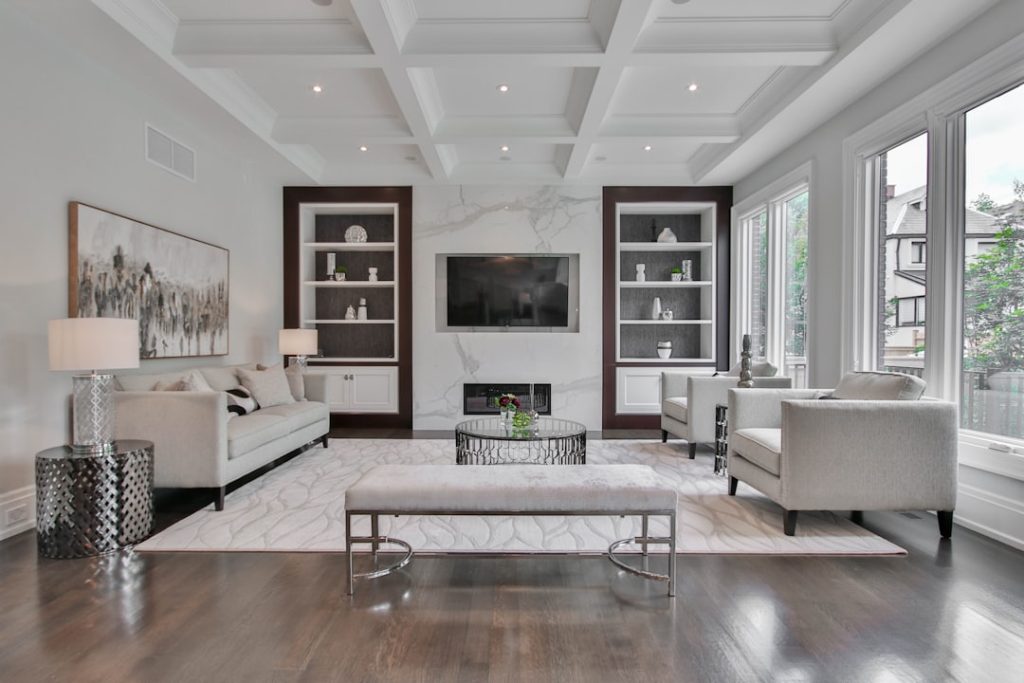Built-in unit living rooms have emerged as a popular choice for homeowners seeking to optimize their living spaces while maintaining a stylish and cohesive aesthetic. These units, which are custom-designed to fit seamlessly into the architecture of a room, offer a multitude of benefits that extend beyond mere storage. They can transform an ordinary living room into a multifunctional area that caters to both relaxation and entertainment needs.
The integration of built-in units allows for a more organized environment, reducing clutter and enhancing the overall ambiance of the space. The appeal of built-in units lies not only in their functionality but also in their ability to enhance the design of a living room. By utilizing the available space more effectively, these units can create a sense of harmony and flow within the room.
Whether it’s a cozy nook for reading, a display area for cherished items, or a sophisticated entertainment center, built-in units can be tailored to meet the specific needs and tastes of the homeowner. As we delve deeper into the various aspects of built-in unit living rooms, it becomes clear that they are not just a trend but a practical solution for modern living.
Key Takeaways
- Built-in units optimize living room space by utilizing vertical storage and display areas.
- Customization allows built-in units to meet specific functional and aesthetic needs.
- Seamless integration of built-in units enhances the overall look and flow of the living room.
- Incorporating technology and entertainment systems into built-ins maximizes functionality.
- Built-in units offer a cost-effective solution for stylish and efficient living room design.
Utilizing Vertical Space for Storage and Display
One of the most significant advantages of built-in units is their ability to utilize vertical space effectively. In many homes, especially those with limited square footage, vertical storage solutions can make a substantial difference in maximizing usable space. Built-in shelves that extend from floor to ceiling can accommodate books, decorative items, and even plants, drawing the eye upward and creating an illusion of height in the room.
This verticality not only enhances storage capacity but also adds an element of design sophistication. Moreover, vertical storage can be customized to fit the specific dimensions and style of the living room. For instance, a built-in unit can feature open shelving for displaying art pieces or family photos, while closed cabinets can be incorporated at lower levels to hide away less visually appealing items.
This combination allows homeowners to curate their displays while keeping essential items organized and out of sight. The strategic use of vertical space not only optimizes storage but also contributes to a more visually appealing environment, making the living room feel more spacious and inviting.
Customizing Built-In Units to Fit Your Needs

The beauty of built-in units lies in their customization potential. Homeowners can work with designers or carpenters to create units that reflect their personal style and meet their specific needs. This customization process begins with assessing the available space and determining how the built-in unit will function within the living room.
For example, a family with young children may prioritize safety features and durable materials, while a couple who enjoys entertaining might focus on creating an integrated bar area or additional seating. Customization also extends to the choice of materials, colors, and finishes. A built-in unit can be designed to match existing furniture or architectural elements in the room, ensuring a cohesive look.
For instance, if the living room features rustic wooden beams, a built-in unit crafted from reclaimed wood can enhance that aesthetic while providing functional storage. Additionally, homeowners can choose between open shelving for a more casual feel or closed cabinetry for a sleek, modern look. This level of personalization ensures that each built-in unit is not only functional but also a true reflection of the homeowner’s taste and lifestyle.
Creating a Seamless Look with Built-In Unit Living Rooms
| Metric | Description | Typical Value | Impact on Seamless Look |
|---|---|---|---|
| Material Consistency | Use of matching materials (wood, laminate, paint) across built-in units and room elements | 90%+ matching surfaces | High – Ensures visual unity and flow |
| Color Palette Uniformity | Use of a consistent color scheme for built-in units and surrounding walls/furniture | 1-2 primary colors with 1 accent | High – Creates cohesive and calming environment |
| Integrated Lighting | Built-in lighting elements such as LED strips or recessed lights within units | 3-5 lighting points per unit | Medium – Enhances ambiance and highlights design features |
| Flush Installation | Built-in units installed flush with walls and ceilings | Less than 1/8 inch gap | High – Eliminates visual breaks and shadows |
| Hardware Minimalism | Use of concealed or minimal hardware on doors and drawers | Hidden hinges and push-to-open mechanisms | Medium – Maintains clean lines and simplicity |
| Custom Fit | Units tailored to exact room dimensions | Within 1/4 inch tolerance | High – Prevents gaps and awkward spaces |
| Consistent Design Style | Matching design elements such as moldings, profiles, and finishes | Single design style (e.g., modern, traditional) | High – Reinforces unified aesthetic |
A key advantage of built-in units is their ability to create a seamless look within living rooms. Unlike freestanding furniture, which can disrupt the flow of a space, built-in units are designed to integrate harmoniously with the architecture of the room. This integration often involves aligning the unit with existing wall features or molding, creating a cohesive appearance that enhances the overall design aesthetic.
To achieve this seamless look, careful attention must be paid to details such as color matching, material selection, and architectural style. For example, if the living room has traditional crown molding, incorporating similar molding around the built-in unit can create visual continuity. Additionally, using paint colors that complement the walls or existing furniture can further enhance this effect.
The result is a polished and sophisticated living room that feels thoughtfully designed rather than pieced together.
Maximizing Functionality with Built-In Unit Living Rooms
Functionality is at the heart of built-in unit design. These units are not merely decorative; they serve multiple purposes that cater to the diverse needs of modern living. For instance, a built-in unit can incorporate seating areas, such as window benches or integrated sofas, providing additional places for family and guests to gather without taking up valuable floor space.
This multifunctionality is particularly beneficial in smaller homes where every square foot counts. In addition to seating, built-in units can house various features such as lighting elements, charging stations for electronic devices, or even hidden compartments for games and toys. By integrating these functionalities into the design, homeowners can create an organized and efficient living space that adapts to their lifestyle.
The versatility of built-in units allows them to evolve with changing needs over time, making them a smart investment for any home.
Incorporating Technology and Entertainment Systems

In today’s digital age, incorporating technology into living spaces has become essential for many homeowners. Built-in units provide an ideal solution for integrating entertainment systems without compromising aesthetics. A well-designed built-in unit can house televisions, sound systems, gaming consoles, and other electronic devices in a way that keeps wires hidden and maintains a clean look.
For example, a built-in media center can feature adjustable shelves that accommodate various sizes of televisions while providing storage for DVDs, video games, and remote controls. Additionally, incorporating cable management systems within the unit ensures that unsightly cords are concealed from view. This thoughtful integration allows homeowners to enjoy their favorite entertainment without detracting from the overall design of the living room.
Furthermore, smart home technology can be seamlessly integrated into these units, allowing for easy access to streaming services and other digital content.
Enhancing the Aesthetic Appeal of Your Living Room
Beyond functionality, built-in units significantly enhance the aesthetic appeal of living rooms. They serve as focal points that draw attention and add character to the space. The design possibilities are virtually limitless; homeowners can choose from various styles ranging from minimalist modern designs to ornate traditional cabinetry.
This versatility allows built-in units to complement any interior design theme. Incorporating decorative elements such as lighting fixtures within or above built-in units can further elevate their visual impact. For instance, LED strip lights can be installed on shelves to highlight decorative items or artwork displayed within the unit.
Additionally, using glass doors on cabinets can create an elegant display area while protecting items from dust. By thoughtfully considering both form and function in their design, built-in units can transform a living room into an inviting and stylish environment.
The Cost-Effectiveness of Built-In Unit Living Rooms
While some may perceive built-in units as an expensive investment, they often prove to be cost-effective in the long run. The durability and quality associated with custom-built units mean they are less likely to require replacement compared to freestanding furniture options that may wear out more quickly. Additionally, by maximizing storage and functionality within a limited space, built-in units can reduce the need for additional furniture purchases over time.
Moreover, built-in units can increase property value by enhancing the overall appeal of a home. Potential buyers often appreciate well-designed spaces that offer both style and practicality; thus, investing in built-ins can yield significant returns when it comes time to sell. The combination of aesthetic enhancement and increased functionality makes built-in unit living rooms not just an expense but rather an investment in both comfort and value for homeowners looking to elevate their living spaces.



